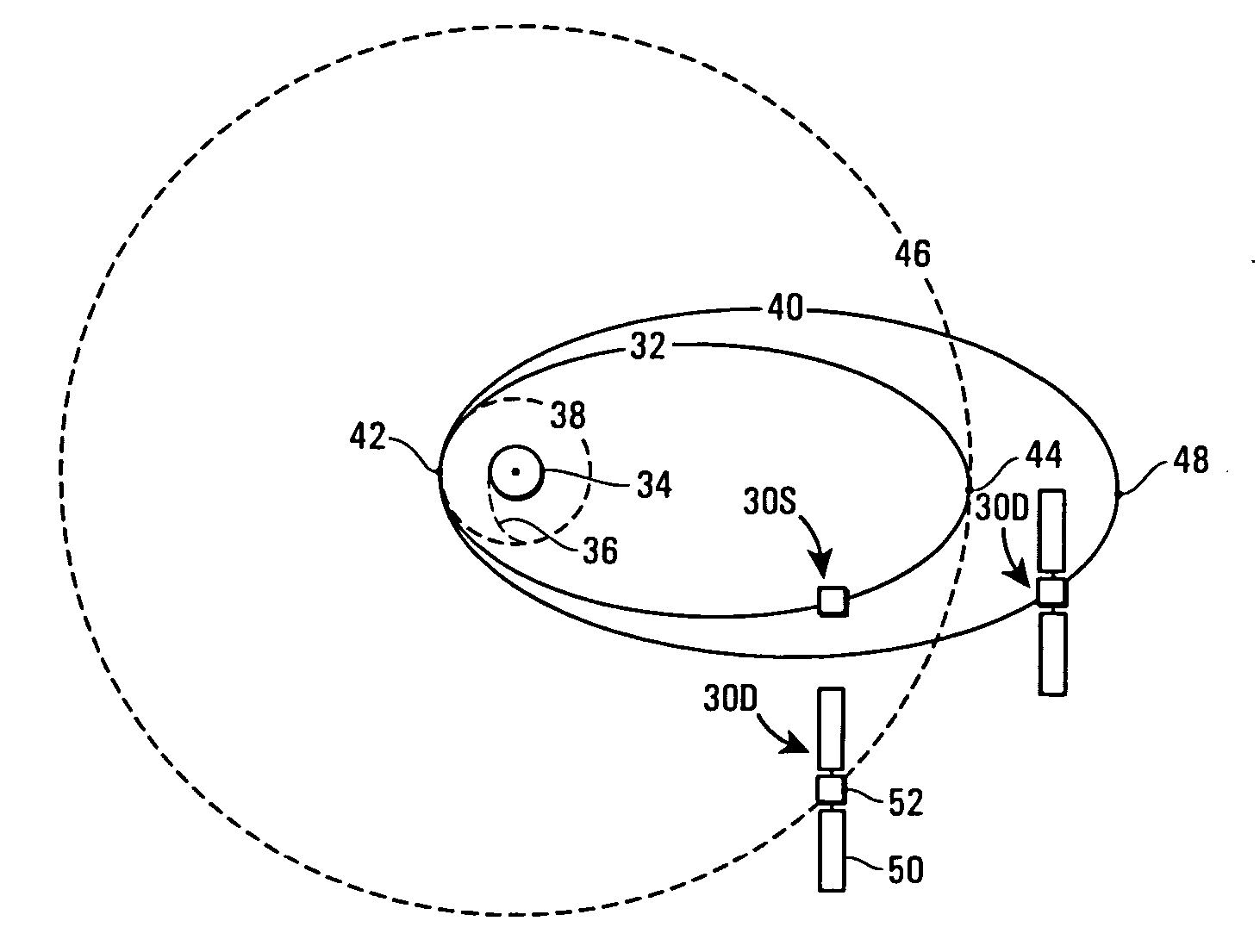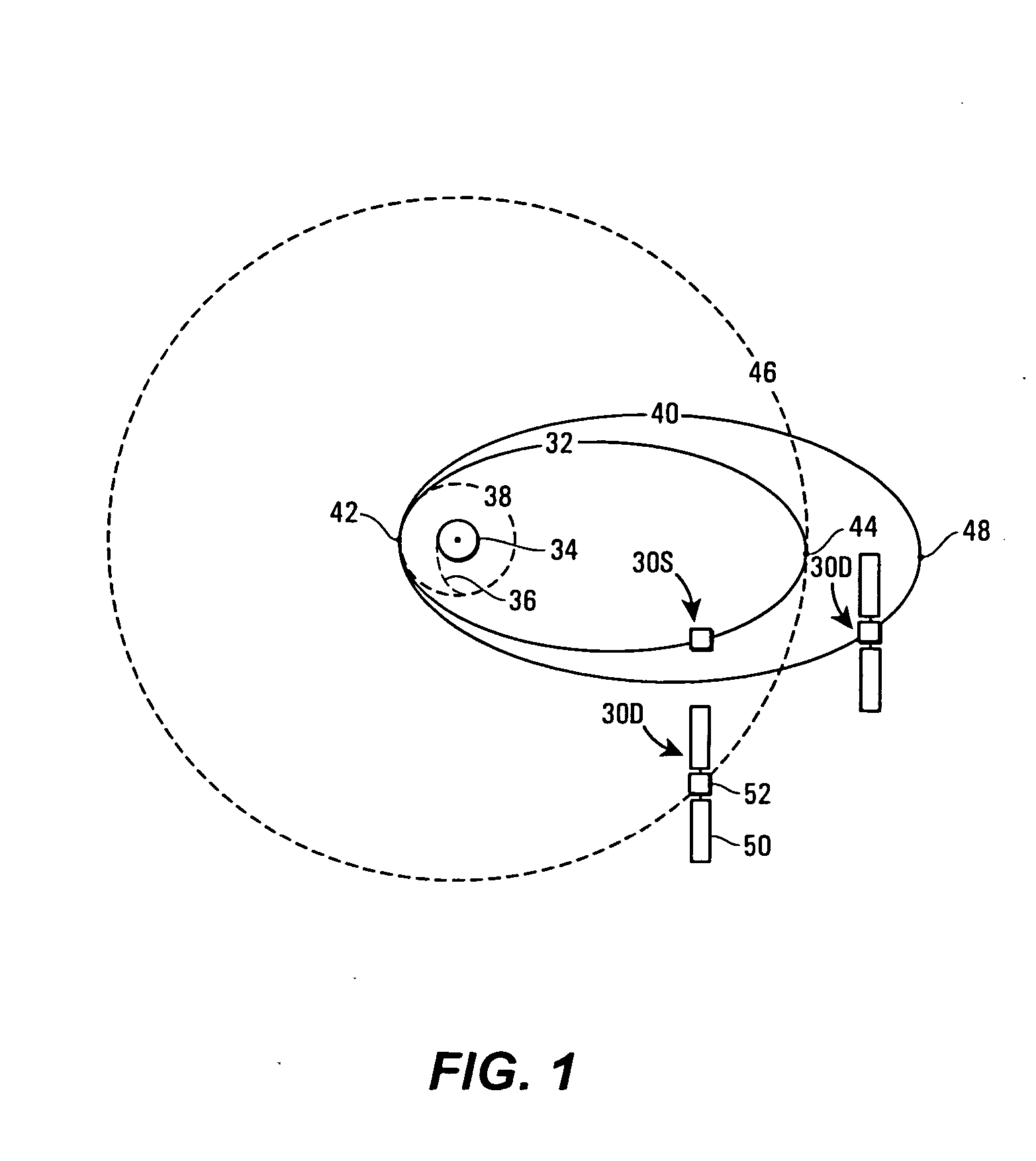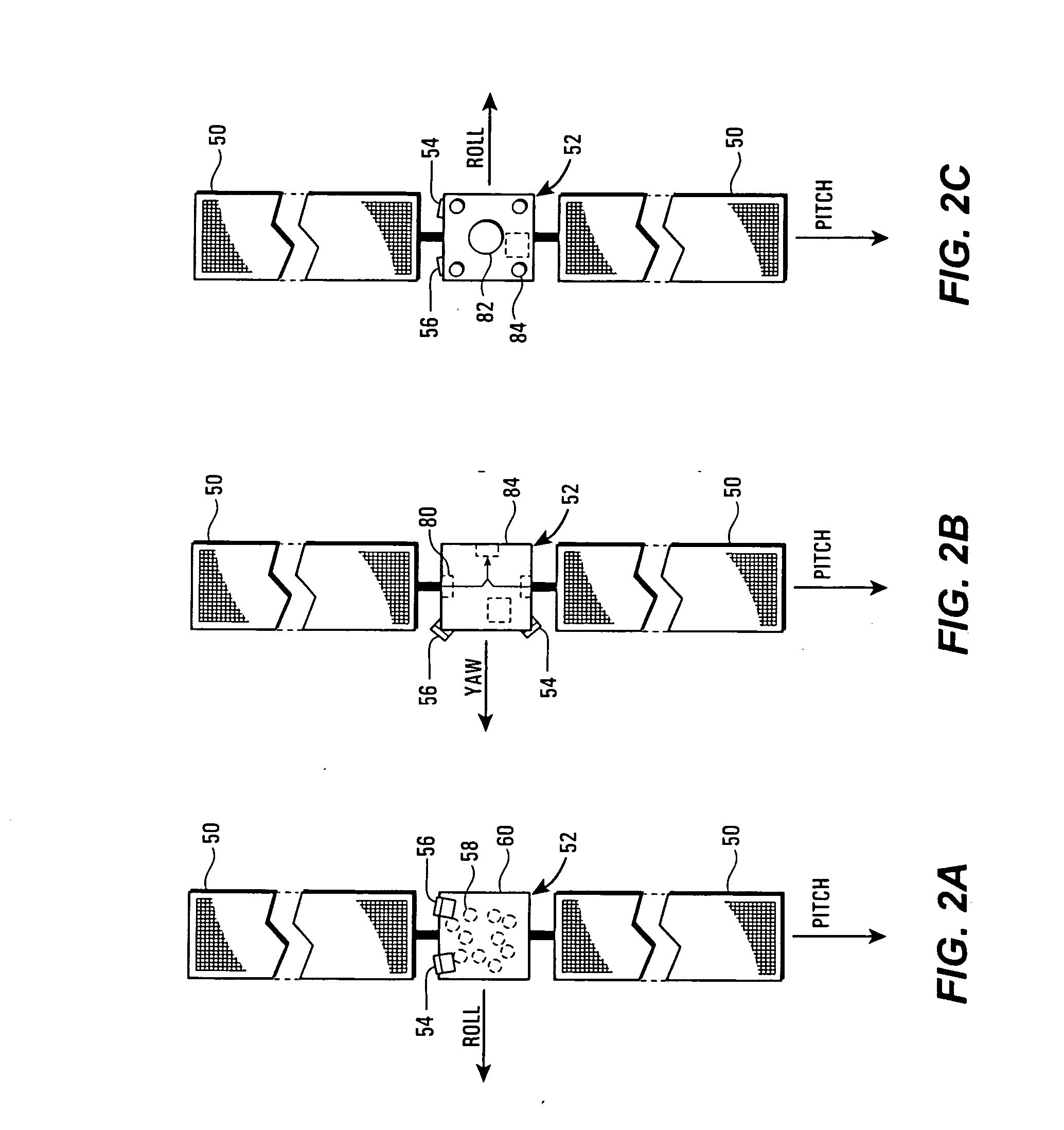Spacecraft power acquisition method for wing-stowed configuration
a technology of power acquisition and spacecraft, applied in process and machine control, instruments, navigation instruments, etc., can solve the problems of increasing spacecraft weight, sensor and processor complexity, and the development cost of spacecraft attitude determination and control systems, etc., to facilitate attitude control
- Summary
- Abstract
- Description
- Claims
- Application Information
AI Technical Summary
Benefits of technology
Problems solved by technology
Method used
Image
Examples
Embodiment Construction
[0033] With reference initially to FIG. 1, a spacecraft 30S with its solar wings in a stowed position is depicted in a first transfer orbit 32 about the earth 34. Also depicted in FIG. 1 are a launch path 36, a parking orbit 38, and a second transfer orbit 40. The first transfer orbit 32, the parking orbit 38, and the second transfer orbit 40 may all have a common perigee point indicated at 42. The first transfer orbit 32 shares an apogee point indicated at 44, that is the same altitude as a geosynchronous orbit at 46. The second transfer orbit 40 has an apogee at 48 that is greater in altitude than the geosynchronous orbit 46. As indicated by the reference numeral 30D, the spacecraft in the second transfer orbit and in the geosynchronous orbit 46 may have solar wings 50 deployed and extending beyond a main portion 52 of the spacecraft 30D. As shown in FIGS. 2A-2C, the spacecraft 30D may include a primary star tracker 54 and a redundant star tracker 56, an optional gyro device, such...
PUM
 Login to View More
Login to View More Abstract
Description
Claims
Application Information
 Login to View More
Login to View More - R&D
- Intellectual Property
- Life Sciences
- Materials
- Tech Scout
- Unparalleled Data Quality
- Higher Quality Content
- 60% Fewer Hallucinations
Browse by: Latest US Patents, China's latest patents, Technical Efficacy Thesaurus, Application Domain, Technology Topic, Popular Technical Reports.
© 2025 PatSnap. All rights reserved.Legal|Privacy policy|Modern Slavery Act Transparency Statement|Sitemap|About US| Contact US: help@patsnap.com



